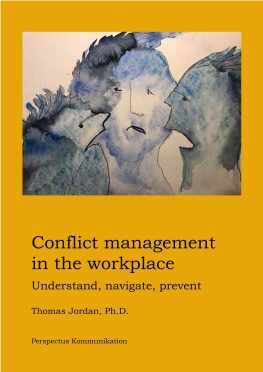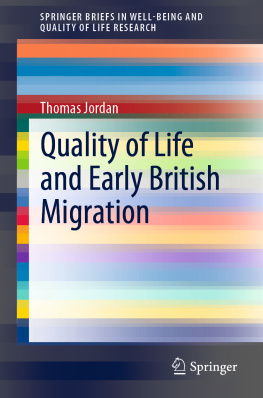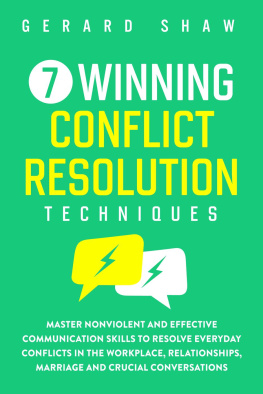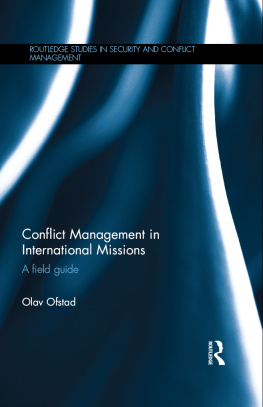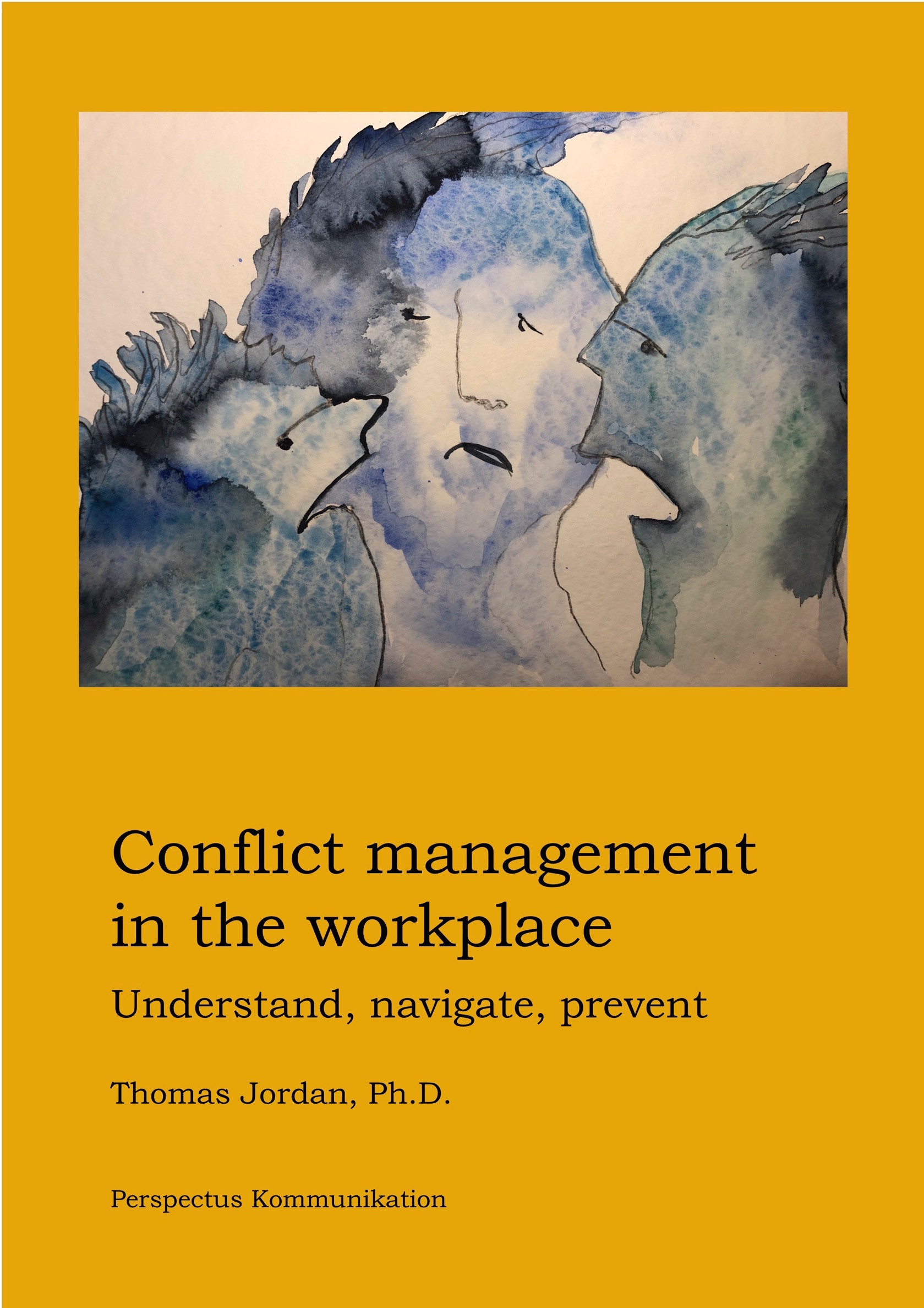Thomas Jordan - Conflict Management in the Workplace: Understand, Navigate, Prevent
Here you can read online Thomas Jordan - Conflict Management in the Workplace: Understand, Navigate, Prevent full text of the book (entire story) in english for free. Download pdf and epub, get meaning, cover and reviews about this ebook. City: Gothenburg, year: 2020, publisher: Perspectus Kommunikation AB, genre: Business. Description of the work, (preface) as well as reviews are available. Best literature library LitArk.com created for fans of good reading and offers a wide selection of genres:
Romance novel
Science fiction
Adventure
Detective
Science
History
Home and family
Prose
Art
Politics
Computer
Non-fiction
Religion
Business
Children
Humor
Choose a favorite category and find really read worthwhile books. Enjoy immersion in the world of imagination, feel the emotions of the characters or learn something new for yourself, make an fascinating discovery.
- Book:Conflict Management in the Workplace: Understand, Navigate, Prevent
- Author:
- Publisher:Perspectus Kommunikation AB
- Genre:
- Year:2020
- City:Gothenburg
- Rating:3 / 5
- Favourites:Add to favourites
- Your mark:
Conflict Management in the Workplace: Understand, Navigate, Prevent: summary, description and annotation
We offer to read an annotation, description, summary or preface (depends on what the author of the book "Conflict Management in the Workplace: Understand, Navigate, Prevent" wrote himself). If you haven't found the necessary information about the book — write in the comments, we will try to find it.
The conflicts we get in touch with are all in some ways unique, because there are many different types of circumstances that influence how they show up. In the end, no one else can tell you how best to deal with the conflict you are facing. You will have to make your own best judgment about what path to take.
The reader is introduced to an explanation of what drives conflict and how people come under action pressure in conflicts; the three levels of causes of and actions in workplace conflicts (the individual, relationship and system levels); five common types of conflict issues; Johan Galtungs conflict triangle; Friedrich Glasls conflict escalation model; the four basic approaches to conflict management (dialogue, discussion, rule-based procedures and steamrollering); Thomas Jordans conflict intervention matrix; and several other concepts and models.
Special attention is devoted to the roles of self-awareness in conflict: how being in mindful contact with ones own feelings, interpretations and judgments influences reactions and actions. Weak self-awareness can explain many missed opportunities for influencing conflict situations constructively, whereas strong self-awareness is a key competence for developing skillfulness in handling conflict situations. Understanding the role played by self-awareness is not only helpful for developing ones own skills, but also for a deeper understanding of the reactions and actions of others.
A comprehensive chapter reviews communication skills relating to conflict: helpful and concrete conversation techniques for creating real dialogue, solution-focused discussions and constructive negotiations.
The chapter on conflict management introduces the reader to a thorough overview of the tools, measures and strategies available for management of more tenacious workplace conflicts. The conflict intervention matrix presented here is a powerful strategic tool for designing a conflict management strategy. Special topics include solution-focused mediation, skillful steamrollering and group mediation methodology.
The final chapter offers an overview of the strategies for creating a robust collaboration culture in an organization. A workplace will always have a certain conflict potential, i.e. issues where people want things to be in a certain way and may be blocked by others. A robust collaboration culture ensures that most of those issues can be resolved early and in constructive forms, while also providing support for constructively managing more protracted conflicts.
Attached to the book are a number of downloadable worksheets for reviewing problems in work teams, assessing the communication climate, making an organizational diagnosis and developing a strategy for building a robust collaboration culture.
The book is intended for managers, team leaders, HR specialists, university level students in various fields, organizational consultants and, of course, anyone who needs to better understand and navigate conflict. The book focuses workplace conflict, but most of the offerings in the book are relevant for conflicts in any arena of life.
The Swedish edition of this book was selected as HR book of the year in 2015 by the Swedish Association of HRM.
Thomas Jordan: author's other books
Who wrote Conflict Management in the Workplace: Understand, Navigate, Prevent? Find out the surname, the name of the author of the book and a list of all author's works by series.

